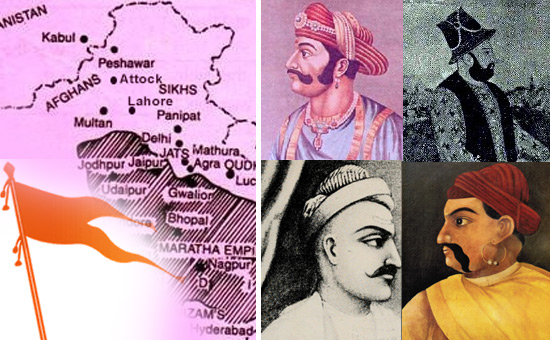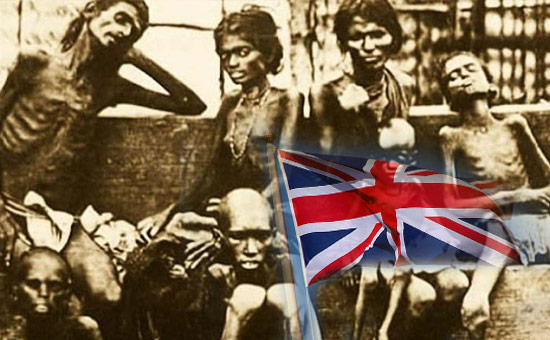- This
precis covers 1707 to 1818 and includes political situation post Aurangzeb &
rise of the Marathas, Changes due to influence of Western World and Economic
exploitation of India by British.
Shri
V Balachandran (ex-Special Secretary Cabinet Secretariat) wrote in The Tribune
Chandigarh Neglecting
cultural czar Munshi’s efforts This goaded me to do a precis of
Foreword of 11 Volumes of The History and Culture of Indian People. The books
are a masterpiece & my constant reference book
Shri
K
M Munshi was an educationist, freedom fighter, founder of Bharatiya
Vidya Bhavan (1938), author and worked closely with Sardar Patel. He initiated
the writing of The History and Culture of
the Indian People. Shri R.C. Majumdar was General Editor. V.G. Dighe is the
Assistant Editor of Vol 8. It was first published in 1977.
K
M Munshiji said, “That although efforts to prepare this massive history-writing
had started in 1938, it could assume concrete shape only in 1944 with generous
help from GD Birla and the Shri Krishnarpan Charity Trust.”
Precis
is split in parts. Each part has a number and title that represents content.
Let us hope these books become part of the mainstream educational system.
Part
1
covered period 1000-1300 and includes state of Indian society around 1000, why
did it survive the earlier 2,000 years, status of Sanskrit, social impact of
Muslim invasions, why lower strata of society adopted Islam, South Indian kings,
rise of Desabhashas and Bhakti.
Part
2
covers period 1300 to 1526. It tells did Khilji/Tughluq rule all of India, Timur
invasion, what is common between Timur and Vasco da gama, Religious Life then, Impact
of Islam, Religious life and Language Literature and did Muslim or Hindu ruler
of Orissa support Chaitanya Mahaprabhu.
Part
3
covers 1526-1707 i.e. Mughals. It includes Mughal rule esp. intolerance towards
Hindus, warrior Hemu and Tansen.
Part
4 covers 1707-1818. It includes Political situation post Aurangzeb and rise of
the Marathas, Changes due to influence of Western World and Economic
exploitation of India by British.
My
only contribution is doing a precis of the preface. This piece is courtesy the
publisher, Bharatiya Vidya Bhavan Mumbai.
 Marathas captured Attock in modern day Pakistan.
Marathas captured Attock in modern day Pakistan.
The Maratha Century (period 1707-1818) Preface by Dr R.C. Majumdar
This
volume was published in 1977 after Shri K M Munshi passed away. So we are
presenting excerpts from Preface written by General Editor, Dr R.C. Majumdar.
For sake of consistency the title remains the same except the period.
I Political situation post Aurangzeb and rise of the Marathas
“This
period covers the history of India from the death of Aurangzeb (1707) to the
Third Maratha War (1818). It witnessed the end of Muslim rule, the rise and
fall of the Maratha Empire and the foundation of the British Empire in India.
The
period began with the political disintegration leading to struggle for power,
not only among the Indian States but also between the French and British
trading companies in India. This chaotic political situation facilitated, if
not invited, foreign invasions notably those of Nadir Shah and Ahmed Shah
Abdali, which bear comparison, in nature and effect, with of those of Mahmud
Sultan and Timur.
The
silver lining, is that during this period of political disruption, was the rise
of great personalities that shed lustre on that age. These were Balaji
Vishwanath, Baji Rao I, Nana Phadnis, Mahadji Scindia, Haidar Ali, Ranjit
Singh, Robert Clive, Dupleix, Warren Hastings and Richard Wellesley.
II Changes due to influence of Western World
This
period paved the way for India’s transition to the Modern Age in the 19th
century. It was during this period that India first came into close contact
with the Western World which had huge impact on Indian culture. It brought
about changes in almost all aspects of Indian culture in the 19th
century, which is generally referred to as Indian Renaissance.
It
was during this period that Indians first learnt the English language resulting
in far-reaching changes in India life, thought, education & social and
religious concepts in the course of 100 years, such as were not witnessed
during the previous 1000 years.
 Famines during British rule.
Famines during British rule.
III Economic exploitation of India by British
Against
this background of all-round signs of progress must be seen the deterioration
in the economic condition to such an extent that India, which was one of the
wealthiest countries in the world, became one of the poorest during the period
under review.
The
ruthless economic exploitation of India by the British was undoubtedly the
cause of the deplorable poverty in India following the ruin of trade and
industry by the unfair competition of British merchants and manufacturers aided
by the political power of Britain.” End of quote
This
was the last of the eleven volumes, finished in 1976 and was the end of the
32-year old scheme.
The above excerpts
are courtesy and copyright the publisher the Bharatiya Vidya Bhavan, Kulapati K.M.
Munshi Marg, Mumbai-400007, India.
eSamskriti has obtained permission to share from the Editorial Advisory
Board of Bharatiya Vidya Bhavan.
To
read full Foreword visit the Bhavan site and HERE (shall be uploaded shortly)
To buy
book The History and Culture of Indian People at Bhavan’s
Online Store or on
Amazon
To
subscribe to the Bhavan’s Journal To
read on Culture
To
read Vande Mataram (English translation by Sri Aurobindo)
Also read
1. The
Maratha Century
2. How
India became a poor country
3. Battle
of Assaye
4. Third
Anglo-Maratha War
5. Life
story of Mahadji Shinde
6. Impact
of Bajirao Peshwa on India of the 18th century
7. Was
India always a poor country
8. Madhav
rao Peshwa the Great
9. Battle
of Panipat 1761
10. Famines
during British Rule